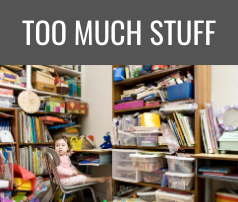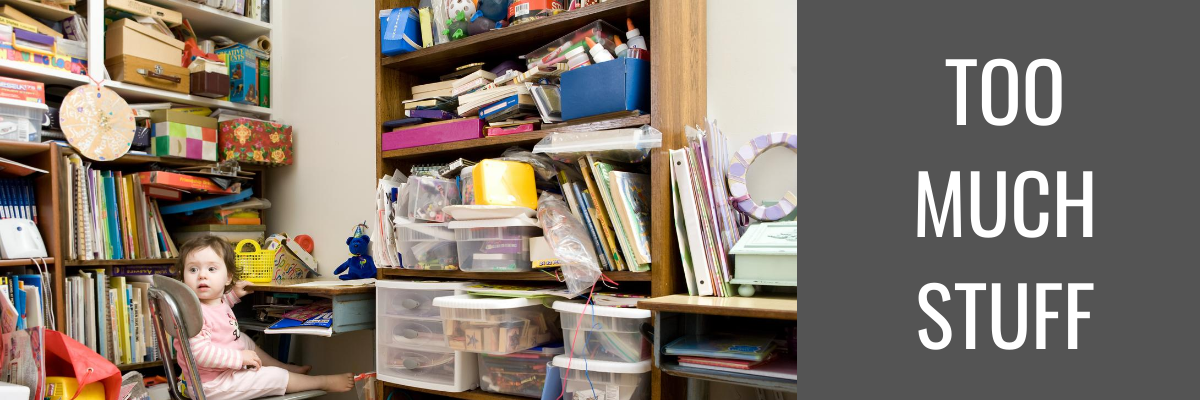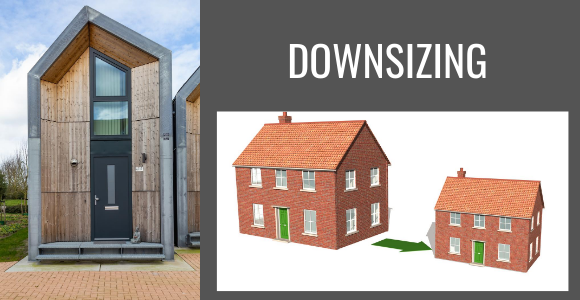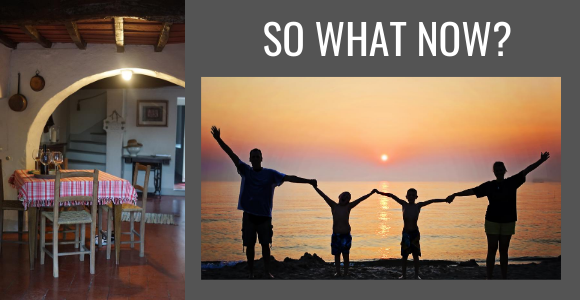 Green Benefits
Green Benefits
Too Much Stuff

Chicago Textile Recycling works hard to “divert over 2.5 million pounds of waste from area landfills annually” and educate the public on the need for textile recycling in helping to care for our planet. Though we address primarily the recycling of textiles, overbuying and improperly disposing of possessions is a general problem across the board. We have become a culture consumed by materialism, having more, constantly wanting more, and with that comes a price paid by the health of our planet. It is a problem we need to take more seriously, and one that Adam Minter addresses in his newest book, “Secondhand: Travels in the New Global Garage Sale.”
For the sake of not creating a 700 page volume out of a blog post, I will mainly address the parts of his book where he discusses downsizing and cleaning out homes posthumously (after death).

Downsizing
In this time of tiny home popularity, downsizing is a regular occurrence. Not only is downsizing done voluntarily by those who are chasing after a simpler lifestyle, but it is also done by or for our aging population as they leave their lifelong homes to move into their (adult) child’s home or an assisted living facility.
Whatever reason one finds for downsizing, the question remains what to do with all of that stuff?
In his book, Minter educates his readers about cleanout companies that exist solely to help families downsize,
“The reasons for these cleanouts vary, but they typically revolve around downsizing and death. Business is booming: by 2030 senior citizens will account for one fifth of the U.S. population. Some of those seniors want to remain in their large single-family homes packed with stuff. But many others downsize, either by their own or someone else’s choice.” (“Secondhand,” p. 2)
The fact remains that many things a person owns has little to no resale value, with most of it accumulated for sentimental reasons. These sentimental reasons would likely not be relevant for others, and thus these items do not get resold. Additionally, Americans have grown over the last century in how much stuff that entails,
“The idea that a person may reach the end of life with more stuff than he or she can manage is new. For much of human history, senior citizens were among society’s most destitute and left little material evidence of themselves. That changed, like so much else, in the mid-twentieth century. Thanks to large houses (the average U.S. house has more than doubled in size since the 1950s), a robust social safety net, and longer lifespans, Americans have had the opportunity to acquire more stuff over a longer period of time than any nation in history.” (p. 8)
This newer problem of owning too much stuff has made an impact on the younger generation, who have created an entire movement realized from the dissatisfaction of owning too much. The simpler lifestyle movement was born, and with it, the tiny house movement, which challenges willing participants to downsize to bare necessities. Downsizing saves money and hopefully increases recreation time to pursue hobbies and things they love to do outside of work hours. Documentaries, books, and reality shows abound following this population in downsizing and chasing after what they find most important.
Through the writing of this book, it too affected Minter. Though his initial mission was to set out and find where his deceased mother’s belongings ended up, he ended up realizing too what “every consumer sort of knows. Sooner or later, we all know: it’s just stuff, and stuff isn’t forever.” (p. 272)

Posthumous Cleanouts
Another large problem presented by owning too much stuff is what happens to our belongings after we pass away. In short, this was the impetus Minter had in writing his second book, “Secondhand”:
“Two weeks after Junkyard Planet was published, my mother passed away unexpectedly. Like so many Americans with parents who accumulated stuff over a lifetime, my sister and I were left with an uneasy question: What do we do with her stuff? From a sentimental standpoint, it was hard to let go of anything for fear it meant something to her. From a practical perspective, neither of us had the space to keep much.” (“Secondhand,” p. xiv)
Though I am fortunate to still have two of my grandmothers alive (one in her 90s), I am entering the time of life when my peers and I are losing our parents. Recently my grandmother passed to us a paperweight she had given her husband, my Papa, many many years ago. She shared that he had eyed it longingly in a department store and she then went back later to buy it for him. He had loved receiving it she said and in passing it to my son, hoped it would be treasured once again. We all hope our most cherished belongings will be treasured by family after we are gone.
This hard issue of what to do with loved ones’ belongings after they pass away is a global one. In his book, Minter travels from North America to Asia and finds this problem everywhere. And everywhere he went, there were businesses that had been created to clean out homes of the deceased. As stated earlier, though, it is a new problem:
“Prior to World War II…the United States, like the rest of the world, was still an agrarian society, families were large and localized, and property of any kind was scarce, oftentimes homemade, and valuable. Nineteenth- and early twentieth-century practical housekeeping manuals (a genre that’s largely disappeared) were, in many respects, repair manuals. Some included basic cement recipes to aid in the repair of broken dishes. Others offered advice on basic strategies to prolong the usable lifespan of pottery, ironware, and glass. What little a parent or grandparent owned and left behind was bequeathed to the next generation for uninterrupted use. As the industrial revolution drew families into cities and mass-production jobs, society’s relationship to stuff began to change, and modern notions of ‘waste’ emerged.” (p. 16-17)
In the last 80 years the problem of waste and having “too much” materialized. This is likely due to the growing middle class and our ability to buy more things at cheaper cost and to the loss of sentimentality of owning handmade belongings, such as clothes and other items. As our world has become more fast-paced, we no longer have time to do all these things for ourselves, and so pay others to do them for us. The question then becomes how much is too much? And how can I change to better care for the earth and take more deliberate care of what I already own?

Textiles and Waste
At Chicago Textile Recycling, we aim to promote the recycling of textiles and inform you, our reader, on how to properly dispose of textiles in a way that is environmentally-friendly. This problem of too much stuff is one that pertains also to textiles.
“Likewise, before mass production rendered clothing cheap and large wardrobes a middle-class entitlement, garments were homemade and expensive. A shirt would require days of labor; bed linens and blankets were heirlooms. When they wore out or tore, they were mended, reused in other garments, or–ultimately–reduced to rags for cleaning.
Industrialization and urbanization changed everything. Busy days spent in a sweatshop provided little time to mend a shirt, repurpose it into a new garment, or reduce it to rags. As a result, store-bought alternatives emerged, and families used the money earned from hourly or daily wages to buy them. They were still expensive – it would be decades before middle-class Americans could afford multiple changes of store-bought clothes. But the idea that a garment or other object was a resource that should be renewed at home was eroding. In the process, the sentimental value associated with clothing declined as quickly as the material value. After all, it’s easier to discard a store-bought shirt than one made at home by a mother, a wife, or a sister.” (p. 17)
Fast fashion and our fast-paced lifestyle have led us away from having a sentimental relationship to our belongings. Now it is others who cut our old shirts down to rags.
However, I am hopeful that this new generation of youtube video makers, etsy store creators and young hipsters wanting to return to a slower pace and a simpler lifestyle will help others treasure those things we once held dear, and to return to a more handmade, environmentally-friendly way of life.

So What Now?
Over the course of the book, Minter travels all over the globe, learning a great deal of information about the life of our belongings such as textiles and electronics and how they make their way across continents. He follows those who clean out homes in the midwest of the U.S. and those who clean out homes in Japan and finds that owning too much stuff is a universal problem. It is not a problem that every person has, but many do. Talking to those who work in the field of cleaning out homes, it is clear these workers are affected in positive ways. From affecting their own consumption of material goods to bringing awareness to the brevity of life, it inspires change.
How will this inspire you? Will you buy less knowing someone else will have the task of foraging through your belongings after you pass on? Will you buy more thoughtfully with the environment in mind or how well the item is made knowing it will last to be passed on to the next generation? Or will you begin to declutter, creating your own business as Minter’s wife did during the writing of his book, or simply making better use of what you have and clearing out your space for a simpler lifestyle? The choice is yours.